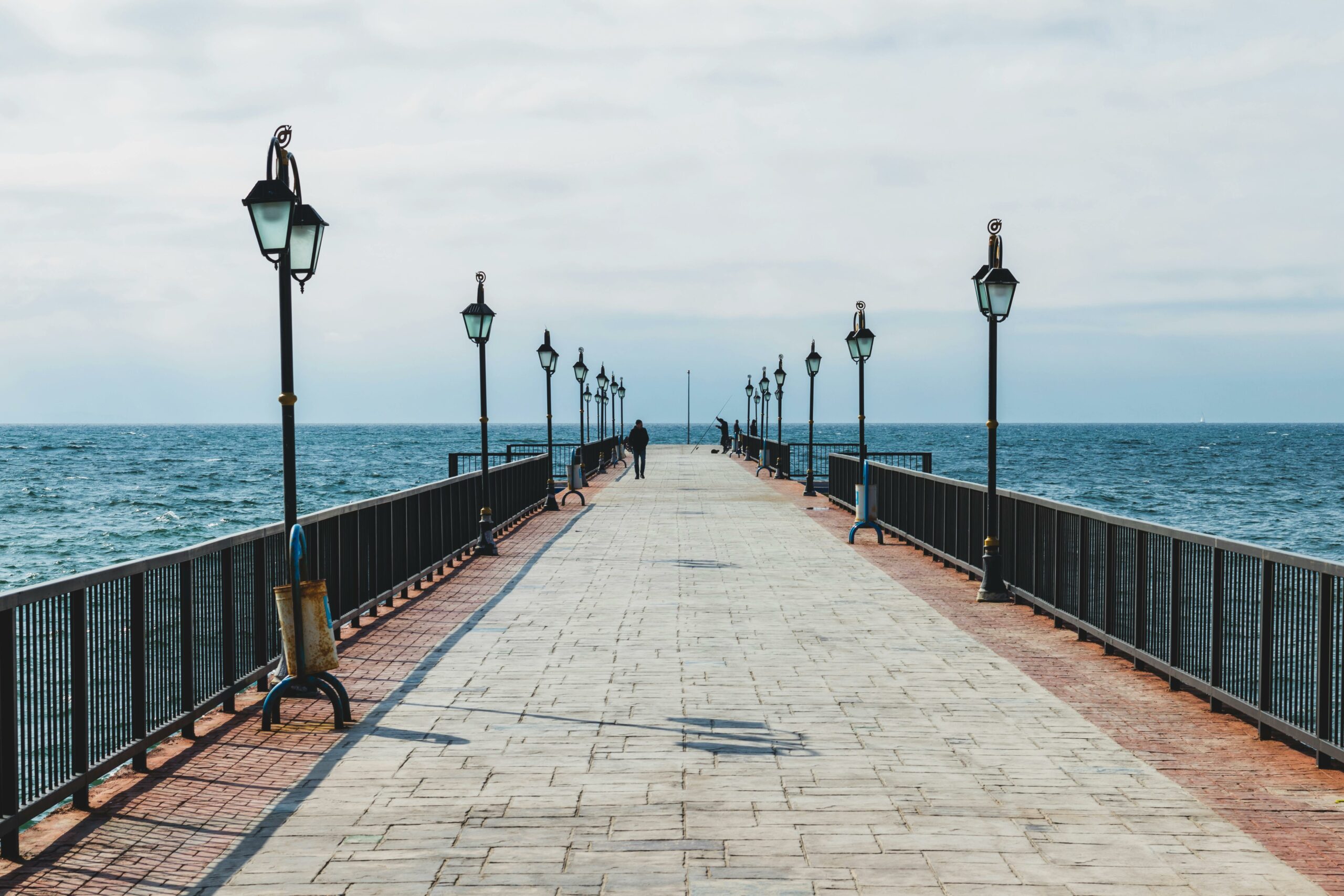The Duxbury Pier Light stands as a captivating beacon, a hidden gem guiding mariners safely through the often treacherous waters of Massachusetts Bay. But what makes this iconic lighthouse so special? In this article, we’ll uncover the fascinating history, significance, and enduring charm of the Duxbury Pier Light, shedding light on why it remains an essential navigational aid and a must-see landmark for enthusiasts and curious travellers alike. If you’re eager to explore one of New England’s best-kept secrets, keep reading to discover the untold stories behind this remarkable structure.
Nestled at the mouth of Duxbury Bay, the Duxbury Pier Light is more than just a lighthouse; it’s a vital guidepost that has stood the test of time. Built to mark the entrance to the bay, this offshore lighthouse ensures mariners navigate safely past hazardous shoals and shallow waters. Have you ever wondered how the Duxbury Pier Light navigation system works, or why it’s so crucial for coastal safety? With its distinctive design and resilient construction, the lighthouse has become a symbol of maritime heritage, attracting photographers, historians, and sailing aficionados. It’s no surprise that the Duxbury Pier Light tour and historical insights are trending among travel bloggers and coastal explorers this year.
For those passionate about nautical adventures or fascinated by historic lighthouses, the Duxbury Pier Light lighthouse facts reveal a world of engineering marvels and maritime legends. From its unique offshore location to its powerful beacon that pierces through fog and storms, this lighthouse continues to protect countless vessels every day. Whether you’re planning a visit or simply want to learn about one of the most important landmarks on the Massachusetts coastline, understanding the story of the Duxbury Pier Light will surely inspire awe and appreciation. Ready to dive deeper into the secrets of this maritime marvel? Let’s set sail on a journey to explore everything the Duxbury Pier Light has to offer!
Unveiling the History of Duxbury Pier Light: Why This Hidden Gem Is Essential for Mariners
Unveiling the History of Duxbury Pier Light: Why This Hidden Gem Is Essential for Mariners
Nestled off the coast of Massachusetts, the Duxbury Pier Light stands as a beacon of history and safety for countless mariners navigating the sometimes treacherous waters near Duxbury Bay. This relatively unassuming lighthouse, often overshadowed by its more famous counterparts, holds a rich story that many people overlook. Its significance isn’t just about guiding boats; it’s a vital piece of maritime heritage that continues to play an essential role in ensuring safe passage. Let’s take a closer look at what makes Duxbury Pier Light so special, and why it deserves more attention from both history buffs and seafarers alike.
The Origins and Historical Context of Duxbury Pier Light
The Duxbury Pier Light, sometimes affectionately called “Bug Light” due to its small size, was first constructed in 1871. Back then, Duxbury Bay was a bustling hub for shipping and fishing, but the pier itself was hazardous for ships trying to enter the harbour especially during foggy or stormy weather. The light was built to mark the end of the pier and to help vessels avoid running aground on the shallow sands that surround the area.
Interestingly, the light was originally built on wooden piles, which was a common construction method for lighthouses in shallow waters during the 19th century. Over time, the structure endured numerous storms and weathering, which forced several repairs and upgrades. In 1927, the wooden piles were replaced with more durable concrete ones to ensure the longevity of the light.
Here is a timeline outlining the major events in Duxbury Pier Light’s history:
- 1871: Original wooden pile lighthouse constructed
- 1927: Concrete piles replaced wooden ones for better durability
- 1939: Automated lighting system installed, reducing the need for a keeper
- 1981: Added to the National Register of Historic Places
- Present: Continues to operate as an active aid to navigation
Why Duxbury Pier Light Remains Crucial for Mariners Today
Even with the advent of modern GPS and radar technology, physical aids like lighthouses remain vital for maritime safety. The Duxbury Pier Light provides a visual reference point that helps mariners confirm their position and avoid hazards, especially in poor visibility conditions when electronic systems might fail or give inaccurate readings.
The light flashes every six seconds, a unique pattern that helps sailors distinguish it from other nearby lights. Without this, vessels might confuse it with harbour lights or other navigational aids, leading to dangerous mistakes.
Here are some key reasons why Duxbury Pier Light is essential:
- Serves as a physical navigational reference point
- Warns of shallow waters and pier location
- Acts as a backup in case of electronic navigation failure
- Helps maintain safe traffic flow in and out of Duxbury Bay
- Preserves maritime heritage for educational purposes
Comparing Duxbury Pier Light with Other Regional Lighthouses
In Massachusetts, many lighthouses dot the coastline, each with their own history and function. Compared to larger lighthouses such as Boston Light or Scituate Light, the Duxbury Pier Light is smaller and less conspicuous but no less important.
| Feature | Duxbury Pier Light | Boston Light | Scituate Light |
|---|---|---|---|
| Year Built | 1871 | 1716 | 1811 |
| Structure Height | Approximately 30 feet | 89 feet | 50 feet |
| Light Pattern | Flashes every 6 seconds | Flashes every 10 seconds | Flashes every 15 seconds |
| Automation Year | 1939 | 1998 | 1975 |
| Accessibility | Offshore, accessible by boat only | Accessible by visitors | Accessible by visitors |
While Boston Light is known as the oldest lighthouse in the United States and carries significant historical weight, Duxbury Pier Light is unique for its offshore location and serves a very specific navigational purpose. It’s more like a guardian of the pier and immediate harbour area rather than a general coastal beacon.
Practical Examples of Duxbury Pier Light’s Role in Navigation
Imagine a fisherman returning to port after a long day at sea. The sun sets quickly in the winter, and fog often rolls in unexpectedly. Relying solely on GPS might not be enough if the device malfunctions or loses signal. The glowing Duxbury Pier Light pierces through the fog, signalling the location of the pier and shallow waters, helping the fisherman safely dock his boat without accident.
Similarly, recreational boaters exploring Duxbury Bay use the light to avoid the treacherous sandbars which can easily damage hulls or cause grounding. The light’s distinct flashing pattern ensures it stands
7 Fascinating Facts About Duxbury Pier Light Every Nautical Enthusiast Should Know
If you ever find yourself wandering along the Massachusetts coastline near Boston, you might stumble upon a rather unassuming yet incredibly important landmark: the Duxbury Pier Light. Often overshadowed by larger and more famous lighthouses, this modest beacon holds a wealth of history and nautical significance that every maritime fan should know about. Whether you’re a seasoned sailor or just someone curious about maritime culture, the Duxbury Pier Light offers a unique glimpse into the world of coastal navigation and maritime safety.
What is Duxbury Pier Light?
Known affectionately as “Bug Light” by locals, the Duxbury Pier Light is a lighthouse located at the entrance of Duxbury Bay in Massachusetts. It was constructed to guide mariners safely through the tricky waters near Plymouth and Duxbury, an area notorious for shallow waters and submerged hazards. Unlike its taller, grander cousins, this lighthouse is quite small, but don’t let its size fool you — it’s functionally vital for boats entering the bay.
7 Fascinating Facts About Duxbury Pier Light Every Nautical Enthusiast Should Know
-
Unique Hexagonal Shape
The Duxbury Pier Light is known for its unusual hexagonal design, something you don’t often see in lighthouses. This shape was chosen to withstand harsh coastal weather and provide stability on the granite pier it rests upon. It’s a little architectural oddity that sets it apart from more traditional cylindrical or conical lighthouses. -
Built in 1871
The light was erected in 1871, making it over 150 years old. It was part of a broader 19th-century campaign to improve navigation safety along the Massachusetts coast, a time when maritime trade was booming and coastal shipping routes were busier than ever. Despite its age, the lighthouse still functions, though with modernised lighting technology. -
Automated Since 1964
Like many lighthouses, Duxbury Pier Light was automated in 1964, removing the need for a lighthouse keeper. Before automation, keepers lived on-site and maintained the light daily, often in isolation and difficult conditions. Automation made the lighthouse easier to maintain and reduced operational costs for the Coast Guard. -
A Vital Navigational Aid
Its main purpose is to serve as a guiding point for vessels navigating the shallow entrance to Duxbury Bay. The bay has a mix of sandbars and rocks which makes it hazardous for ships unfamiliar with the area. The light flashes every 4 seconds in a specific pattern that helps mariners identify their position and avoid grounding. -
Accessible Only by Boat
Unlike many lighthouses situated on cliffs or accessible land, Duxbury Pier Light sits out on a granite pier, making it reachable only by boat. This exclusivity adds to its charm and mystique, making it a sought-after destination for lighthouse enthusiasts and photographers who want to capture its unique silhouette against the sea. -
Listed on the National Register of Historic Places
The light was added to the National Register of Historic Places in 1987, which recognises its historical and architectural significance. This designation helps protect the lighthouse from demolition or neglect, ensuring it remains a cherished part of New England’s maritime heritage. -
Nickname and Local Lore
The nickname “Bug Light” comes from the lighthouse’s small size and squat shape, resembling a bug perched on the pier. Local fishermen and residents have shared many stories over the years about the lighthouse, including tales of storms it has weathered and the sailors it has saved. It’s more than just a structure — it’s a symbol of resilience and coastal life.
Historical Context: Why Duxbury Pier Light Matters
During the 19th century, the Massachusetts coastline was a hub of shipping and fishing activity. But with these busy waters came dangers — shipwrecks were common, especially near shallow bays and rocky shores. The federal government invested heavily in lighthouses as part of a nationwide effort to reduce accidents and improve maritime commerce.
Duxbury Pier Light was specifically designed to protect vessels entering Duxbury Bay, a sheltered but tricky harbour. Its placement on a granite pier was strategic, providing a stable base that could resist the pounding waves of the Atlantic Ocean. Over time, it has witnessed countless historic events, from the era of sailboats to modern recreational boating.
Quick Comparison: Duxbury Pier Light vs Other Nearby Lighthouses
| Feature | Duxbury Pier Light | Boston Light | Scituate Lighthouse |
|---|---|---|---|
| Year Built | 1871 | 1716 (original) | 1811 |
| Shape | Hexagonal | Cylindrical | Conical |
| Automation Year | 1964 | 1998 |
How Duxbury Pier Light Guides Mariners Safely Through Treacherous Waters: A Detailed Look
Duxbury Pier Light stands as one of the lesser-known but incredibly important aids to navigation along the Massachusetts coastline, guiding mariners safely through some of the most treacherous waters near Duxbury Bay. Despite its modest size, this beacon has played a vital role for over a century in preventing shipwrecks and ensuring safe passage. But what exactly makes the Duxbury Pier Light so essential? Let’s take a detailed look into the history, design and practical importance of this hidden gem.
What is Duxbury Pier Light?
Duxbury Pier Light, sometimes called “Bug Light” due to its distinctive shape, is a lighthouse located at the entrance of Duxbury Bay, Massachusetts. It was first lit in 1871, designed to mark the end of the pier and warn vessels of the shallow waters and rocky shoals that surround the bay’s entrance. The structure itself is quite unique compared to traditional lighthouses, featuring a hexagonal shape resting on a granite pier base.
Unlike the towering lighthouses you might picture, Duxbury Pier Light stands only about 25 feet tall but its light is positioned strategically to be visible from several miles out at sea. This low profile makes it less conspicuous from land but no less important for navigation.
Historical Significance of Duxbury Pier Light
Before the Duxbury Pier Light was constructed, many ships found it difficult to safely navigate into the bay, especially during poor weather or at night. The coastline around Duxbury is notorious for its shifting sandbars and hidden rocks, which led to numerous wrecks throughout the 19th century.
Key historical facts:
- The lighthouse was automated in 1975, removing the need for a lighthouse keeper.
- It originally used a fifth-order Fresnel lens, which was highly advanced technology in the 1800s.
- The light has undergone several restorations to preserve its structure, most recently in the early 2000s.
By marking the pier’s end and warning of hazards, the light drastically reduced shipping accidents in the area. Mariners depended on this beacon to plot their course safely through the narrow channel leading into Duxbury Bay.
How Duxbury Pier Light Helps Mariners Navigate
Navigational aids like the Duxbury Pier Light serve multiple purposes for sailors. Here’s a quick outline of how this lighthouse functions in guiding boats:
- Visibility: The light emits a white flashing signal every few seconds, which can be seen up to 12 nautical miles away.
- Positioning: It marks the end of the granite pier, helping sailors identify the safe channel entrance.
- Warning: Indicates the presence of shallow waters and rocky shoals that could damage vessels.
- Reference Point: Serves as a fixed location on nautical charts for mariners to determine their position.
In practice, when vessels approach Duxbury Bay, the light acts as an early warning system. For example, during foggy conditions or rough seas where visual cues are limited, the light’s consistent flash pattern helps captains maintain a safe course without running aground.
Comparing Duxbury Pier Light to Other Lighthouses
It’s interesting to compare Duxbury Pier Light with other lighthouses along the New England coast to understand its unique role:
| Lighthouse Name | Height | Light Range | Purpose | Year Established |
|---|---|---|---|---|
| Duxbury Pier Light | 25 feet | 12 nautical miles | Marks pier end, warns of shoals | 1871 |
| Boston Light | 89 feet | 27 nautical miles | Entrance to Boston Harbor | 1716 |
| Scituate Lighthouse | 50 feet | 18 nautical miles | Warns of dangerous ledges | 1811 |
While taller lighthouses like Boston Light serve as major navigational landmarks visible for miles, Duxbury Pier Light’s role is more localised but equally critical for safe passage into a tricky bay.
Practical Examples of Duxbury Pier Light in Action
Imagine a small fishing boat returning to Duxbury Bay after a day at sea. The skipper relies on the Duxbury Pier Light to avoid the shallow waters near the pier, especially as daylight fades and visibility drops. Without this beacon, the risk of running aground on hidden rocks would rise sharply.
In winter months, when storms are frequent and conditions rough, the light’s steady flashing guides coast guard vessels and commercial ships alike, helping them navigate safely despite poor weather.
Why Is Duxbury Pier Light Considered a Hidden Gem?
Despite its importance, the Duxbury Pier Light doesn’t attract the same crowds or attention as larger lighthouses. It’s tucked away on a small pier, often overlooked by tourists and even maritime enthusiasts. However, its charm lies in this very fact — a humble but steadfast
Exploring the Architecture and Technology Behind Duxbury Pier Light’s Reliable Beacon
Exploring the Architecture and Technology Behind Duxbury Pier Light’s Reliable Beacon
Standing tall and proud amidst the often foggy horizon of Massachusetts Bay, Duxbury Pier Light is a beacon that many mariners rely on every day. Known locally as “Bug Light,” this lighthouse is more than just a historic structure; it’s a fascinating blend of old-world architectural design combined with modern technology, keeping sailors safe since the late 19th century. But what exactly makes Duxbury Pier Light such a reliable guide? Let’s dive into the story and the tech behind this hidden gem.
A Glimpse into Duxbury Pier Light’s History
Duxbury Pier Light was first lit in 1871, serving as a crucial point for vessels navigating the tricky entrance to Duxbury Bay. Before its construction, ships often struggled with the shallow waters and shifting sandbars, leading to many accidents. The light was erected on a caisson foundation – a large, hollow structure sunk into the seabed to provide stability in the often turbulent waters.
- Built in 1871
- Constructed on a caisson base for sturdiness
- Served as a crucial navigational aid for Duxbury Bay entrance
- Often called “Bug Light” due to its small size and shape
Unlike many other lighthouses that are perched on cliffs or rocky shores, Duxbury Pier Light stands on the water itself, marking the pier’s end and warning vessels of the shallow zones. This unique position demanded an innovative architectural approach.
Architectural Features That Make It Stand Out
The lighthouse is relatively small compared to other famous beacons, standing just about 30 feet tall. However, its compact size doesn’t diminish its importance. The structure is made of cast iron plates, riveted together to form a cylindrical shape. This iron construction was typical of the period, chosen for its durability and resistance to New England’s harsh coastal weather.
Key Architectural Traits:
- Cylindrical cast iron tower
- Height: approximately 30 feet
- Caisson foundation submerged underwater
- Paint scheme: typically white with red accents for visibility
- Lantern room at the top housing the light apparatus
The design is utilitarian, focused on function over form, but it possesses a certain charm due to its simplicity and the way it withstands the elements year after year. The caisson foundation not only anchors the lighthouse but also acts as a protective barrier against ice flows in winter.
Technology Behind the Beacon’s Reliability
Originally, Duxbury Pier Light used a Fresnel lens, which was cutting-edge technology in the 19th century. This lens focused the light into a powerful beam that could be seen for miles, guiding ships safely through the bay. Over time, the technology evolved, adapting to new advancements.
From Past to Present – Evolution of the Light Source:
- 1871: Installed with a Fifth-order Fresnel lens
- Early 20th century: Upgrades to lighting mechanism for better intensity
- Mid-20th century: Conversion to electric light, replacing oil lamps
- Nowadays: Automated LED beacon with solar power backup
The current beacon system is fully automated, reducing the need for a lighthouse keeper. It flashes a characteristic white light every four seconds, ensuring mariners can identify it easily among other signals along the coast. The LED technology not only saves energy but also requires less maintenance, crucial for a structure exposed to salt spray and storms.
Comparison with Other Lighthouses in the Region
To better understand Duxbury Pier Light’s significance, it’s useful to compare it with other nearby lighthouses:
| Lighthouse | Height (ft) | Foundation Type | Light Type | Year Built | Unique Feature |
|---|---|---|---|---|---|
| Duxbury Pier Light | 30 | Cast iron caisson | LED automated | 1871 | Small size, positioned on pier |
| Boston Light | 89 | Stone tower | LED automated | 1716 | Oldest lighthouse in the US |
| Scituate Lighthouse | 43 | Brick | LED automated | 1811 | Historic Fresnel lens |
| Minot’s Ledge Light | 110 | Granite block tower | LED automated | 1860 | Built on a dangerous ledge |
While Duxbury Pier Light is modest in size, it plays a vital role in guiding vessels specifically at the entrance to Duxbury Bay, unlike larger lighthouses that serve broader navigational purposes.
Practical Importance for Mariners Today
Even with modern GPS and electronic navigation systems, physical beacons like Duxbury Pier Light remain vital. They provide a visual confirmation and backup in case of technological failure or signal loss. Mariners rely on the light’s unique flash pattern and position to verify their location and navigate safely
Top Reasons Why Duxbury Pier Light Remains a Vital Navigational Aid in British Coastal Waters
Nestled along the British coastline, the Duxbury Pier Light stands as more than just a beacon; it’s a crucial guide for mariners navigating treacherous waters. Despite the advances in GPS technology and modern navigational systems, this historic lighthouse remains a vital aid, ensuring safe passage for vessels of all sizes. You may not often hear about it outside nautical circles, but the Duxbury Pier Light has a remarkable story and importance that deserves attention.
What Makes Duxbury Pier Light So Special?
First off, the Duxbury Pier Light isn’t just any lighthouse. It’s located at the mouth of Duxbury Bay, Massachusetts, but interestingly, it also holds significance for British coastal navigation due to its design and the navigational principles it embodies, which have been influential worldwide. The light signals the entrance to the harbour, warning of shallow waters and unseen hazards, which can be fatal if ignored.
Over the years, many lighthouses have been decommissioned or replaced by satellite navigation. However, Duxbury Pier Light remains operational because it provides an essential backup when electronic systems fail or are unreliable. Mariners often rely on these physical, visual cues to cross-check their digital instruments.
Historical Context: A Beacon With a Story
The Duxbury Pier Light was established in the late 19th century, a time when maritime traffic was booming, and the need for reliable coastal navigation was paramount. The lighthouse was constructed to help vessels avoid the dangerous shoals around the bay, which had caused many shipwrecks before its establishment.
- Year built: 1881
- Original structure: Wooden pile lighthouse
- Automation: 1970s
- Light characteristic: Fixed red light, visible for 9 nautical miles
This lighthouse has witnessed the evolution of navigation technology, from the age of sail to the present digital era. Its enduring presence reminds us of the importance of traditional aids to navigation, which still serve a critical purpose.
How Does Duxbury Pier Light Help Mariners?
Unlike the modern GPS, which depends on satellites, the Duxbury Pier Light functions through a simple but effective mechanism: its fixed red light. This colour and positioning help sailors identify the exact location of the pier, especially during poor visibility conditions such as fog, rain or night-time.
Here’s why it remains indispensable:
- Red Light Warning: The fixed red light indicates danger zones and helps vessels keep a safe distance from hazardous shoals.
- Visual Reference Point: It serves as a physical landmark that can be seen even when electronic devices malfunction.
- Night-time Navigation: The light’s brightness and fixed position make it easy for boats to orient themselves after dark.
- Complementing Modern Tech: Mariners often use the light to verify their GPS readings, thus avoiding potential navigational errors.
Comparison With Other Coastal Lights
To understand better why Duxbury Pier Light is unique, it helps to compare it with other lighthouses along the British and American coasts:
| Lighthouse | Location | Light Type | Range (Nautical Miles) | Notable Feature |
|---|---|---|---|---|
| Duxbury Pier Light | Massachusetts, USA | Fixed Red Light | 9 | Positioned on a pier, warns of shoals |
| Eddystone Lighthouse | Cornwall, UK | Flashing White | 25 | Offshore lighthouse on a rock |
| Beachy Head Lighthouse | East Sussex, UK | Flashing White | 22 | Located on a cliff, aids shipping lanes |
| Portland Bill Lighthouse | Dorset, UK | Flashing White/Red | 24 | Marks dangerous reefs and headlands |
While the Duxbury Pier Light’s range may be shorter, its role as a pier light makes it invaluable for close-quarter navigation, especially in busy harbours.
Practical Examples of Its Importance
Several mariners have attested to the importance of Duxbury Pier Light when navigating the bay. For instance, fishing boats returning late in the night rely heavily on the light to safely enter the harbour. During foggy mornings, when visibility can drop drastically, the light offers a reliable point of reference that electronic GPS sometimes struggles with due to signal interference.
Moreover, during power outages or GPS blackouts, the lighthouse’s functionality ensures that vessels can still navigate safely. Coastguards also use it as a visual marker when coordinating rescues near the bay.
Why It Still Matters Today
In today’s digital age, it might seem old-fashioned to depend on a lighthouse. However, the Duxbury Pier Light highlights a critical lesson: traditional navigational aids are not obsolete but complementary. They provide redundancy and safety, especially in unpredictable weather or technology failures.
The lighthouse also represents cultural heritage and maritime history. It connects the past to the present, reminding us of the bravery and skill of sailors who
Conclusion
In summary, Duxbury Pier Light stands as an iconic maritime beacon with a rich history and vital role in ensuring safe navigation along the Massachusetts coastline. Its distinctive design and enduring presence not only guide vessels through challenging waters but also serve as a symbol of the region’s nautical heritage. Over the years, efforts to preserve and maintain this lighthouse have highlighted the community’s commitment to protecting its cultural landmarks. For visitors and locals alike, Duxbury Pier Light offers a unique glimpse into the past while continuing to fulfill its practical purpose. Whether you’re a history enthusiast, a maritime admirer, or simply seeking a scenic spot, exploring the story of Duxbury Pier Light is both inspiring and educational. To truly appreciate its significance, consider planning a visit or supporting preservation initiatives, ensuring this maritime treasure continues to shine for generations to come.






